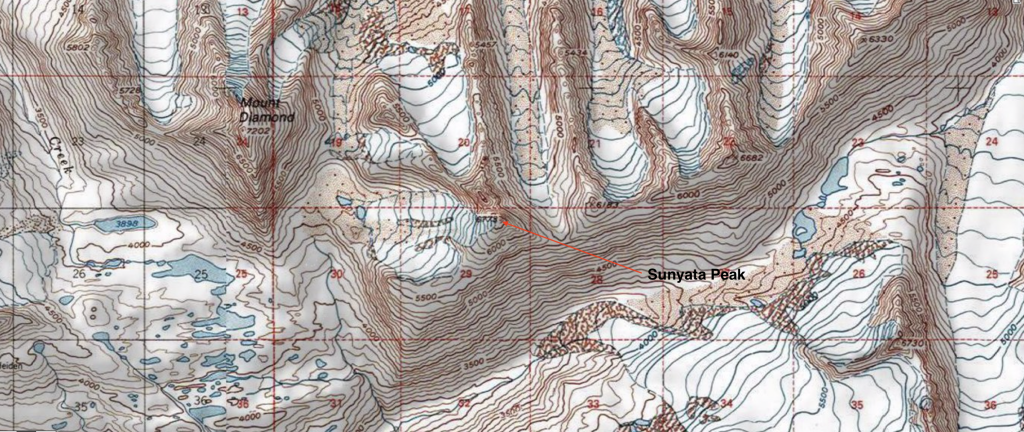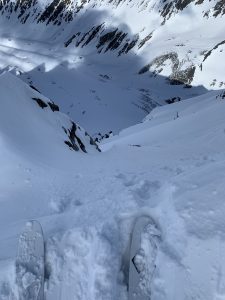The fool in his ignorance, disdaining Mahamudra,
Knows nothing but struggle in the flood of Samsara
Have compassion for those who suffer constant anxiety!
Sick of unrelenting pain and desiring release, adhere to a master,
For when his blessing touches your heart, the mind is liberated.
-Tilopa
The Kingdom of God is spread out upon the Earth, but people do not see it.
-Jesus
There is absolute truth in anarchism and it is to be seen in its attitude to the sovereignty of the state and to every form of state absolutism. … The religious truth of anarchism consists in this, that power over man is bound up with sin and evil, that a state of perfection is a state where there is no power of man over man, that is to say, anarchy. The Kingdom of God is freedom and the absence of such power… the Kingdom of God is anarchy.
-Berdyaev
Have you ever considered how much the economy rules our being?
Our species, Homo sapiens (“wise man” in Latin – more on that later), has existed in its anatomically modern form for an estimated 300,000 years. Crazy to think that for the majority of our species’ existence, we co-existed with other hominid species of the Homo genus (e.g. Neanderthals until ~40,000 years ago). Can you imagine sharing the Earth with another species similar to our own or perhaps, as was the case for a time, several others? It’s good to imagine. We need to imagine; we need to imagine a bright future given that the trajectory we are on is toward a very dark one…dark like the oil, the blood of the Earth, that we continue to extract and burn with reckless abandon, that is driving us toward this dark future.
I guess it’s no surprise that we are the only surviving human species. After all, we can’t even get along within our own species. In just the past couple centuries, phenotypes of Homo sapiens have made great attempts to exterminate other phenotypes. Perhaps the two most striking and recent examples of such attempts are the genocides of the Nazis against Jews and European Americans against Indigenous Americans. And then, of course, we have another striking example of intra-species phenotype-based horror: white European enslavement of black Africans.
Modern Americans, at least, are well indoctrinated in regard to the Jewish Holocaust as a result of compulsory public school history curriculum. It’s quite the testament to the adage “history is written by the victors” that modern Americans seem to be generally clueless about their own government’s genocide against Native Americans, which is arguably the most “successful” genocide attempt in history. What I mean is that, while modern Americans may generally and vaguely be aware of living on land once inhabited by indigenous peoples, we don’t acknowledge their “disappearance” in the same way we acknowledge the Jewish Holocaust. That is, we don’t acknowledge it as a holocaust, which it very much was: systematic destruction of indigenous cultures and extermination of indigenous peoples.
Beyond the aforementioned intra-species problems, we’re also in the midst of the “Sixth Extinction” (aka Anthropocene or Holocene extinction) – one of the most significant extinction events in the history of our planet (and most people aren’t even aware of it). The contemporary extinction we’re experiencing is a particularly unique one, in that it is being driven by a sentient species (us!) and not natural forces uninfluenced by conscious, earthly beings. The economy (now a world economy) and the governments that run it are driving this extinction.
So, my fellow Homo sapiens or “wise (wo)men”, are we really that wise? Do we deserve this title, given that we’re the only species driving mass extinction – including the imminent extinction of our own species given the trajectory we’re on? Being optimistic, and exercising imagination for a brighter future, I hope that we can at least come to deserve it. In coming to deserve it, a first step is realizing how much our global economy rules our being and how destructive that global economy is – both to our inter and intra personal selves, as well as to the entire biosphere.
The whole economic system of Capitalism is an offshoot of a devouring and overwhelming lust … The autonomy of economics has ended in its dominating the whole life of human societies: the worship of Mammon has become the determining force of the age. And the worst of it is that this undisguised “mammonism” is regarded as a very good thing, an attainment to the knowledge of truth and a release from illusions. Economic materialism formulates this to perfection when it brands the whole spiritual life of man as a deception and a dream.
-Badyaev
Fortunately, for the vast majority of Homo sapiens’ existence we’ve lived on the Earth in such a way as to not alter its health as has been done since the advent of industrialization and capitalism. If we go with the 300,000 year estimate of the existence of the anatomically modern human, it’s only within the last couple centuries that we’ve gone from sustainable survival to the technological mastery (or madness) that has resulted in the Sixth Extinction – and our own extinction on an ever more rapidly approaching horizon. That said, within just the past .067% of our existence we’ve gone from surviving with a relatively sustainable impact on the Earth to bringing the entire biosphere to the brink of collapse.
While many humans currently enjoy the comforts of modern civilization, which are unmatched in history, the majority of humans do not. They live in abject poverty, and experience misery that may also be unmatched in human history (and perhaps prehistory). A sadder fact is that, at current population levels, the vast majority of humanity will never be able to enjoy the comforts of the modern world because there are simply not enough resources on the Earth (or six Earths) to provide them for everyone.
Even for those of us with the comforts the biosphere is changing so fast that those of us with several decades of life left to live, life may get quite uncomfortable in the decades ahead. That is, if we don’t start making revolutionary reforms to our societies and lifestyles immediately. So, are all the excessive consumer comforts of capitalism worth it?
We, as a species of the Earth (one member of its community of life), need to get back to a more natural state. That natural state is ruled by ecology, not economy. We are animals, too. We are not at the pinnacle of the hierarchy of existence. We are merely one strand in the incomprehensibly complex web of life.
Such are the teachings of Randoism. Delivered to Randoists on the precipitous wilderness mountain tops of Alaska (in the spirit of Moses receiving the ten commandments on top of Mt. Sinai). It’s the self-dissolving power of these wild places, unmolested by man (minus the despicable trash left behind by carbon gluttonous heli-skiers on Thompson Pass), that facilitate an understanding of Sunyata (after which the prominent peak this trip report is about is named).
I’ve found the Central Chugach Mountains in the Thompson Pass corridor so personally powerful because of their nature. They are WILD, and generally see very few human visitors outside the heli-ski and snow machine season. I do find it quite sad that the sanctity of this sanctuary, easily accessible via non-motorized means by those with a level of fitness that any healthy human should posses, is so disturbed by motorized users for a few months of the year. That motorized molestation hinders the development of much more sustainable non-motorized tourism and recreation, which our great state so desperately needs for its future economy.
The reality is that, without developing a more sustainable economy in the near future, this whole state (which is entirely beholden to the oil and extractive industries) will turn into a collection of ghost towns. After all, the only other big thing we have going is the war industry. That also is, obviously, unsustainable. Yes, we have tourism – but that tourism comes with a big carbon footprint and there doesn’t seem to be much current interest in making that tourism more eco-friendly (i.e. promoting non-motorized recreation and tourism as opposed to very carbon gluttonous and wasteful motorized recreation and tourism – or even just making those high impact forms of tourism less impactful and wasteful).
Another important reason for promoting non-motorized recreation, as opposed to motorized recreation, is for the health of our citizenry and the wondrous ecosystems that make our state unique – that make it THE “Greatland.” As the United States will soon join the rest of the developed world in providing healthcare to all citizens as a universal and basic human right, we need to develop a culture of wellness. A culture of wellness doesn’t include high impact and grossly unsustainable forms of recreation.
Looking at Sunyata ridge from the mouth of the Iguana Backs valley: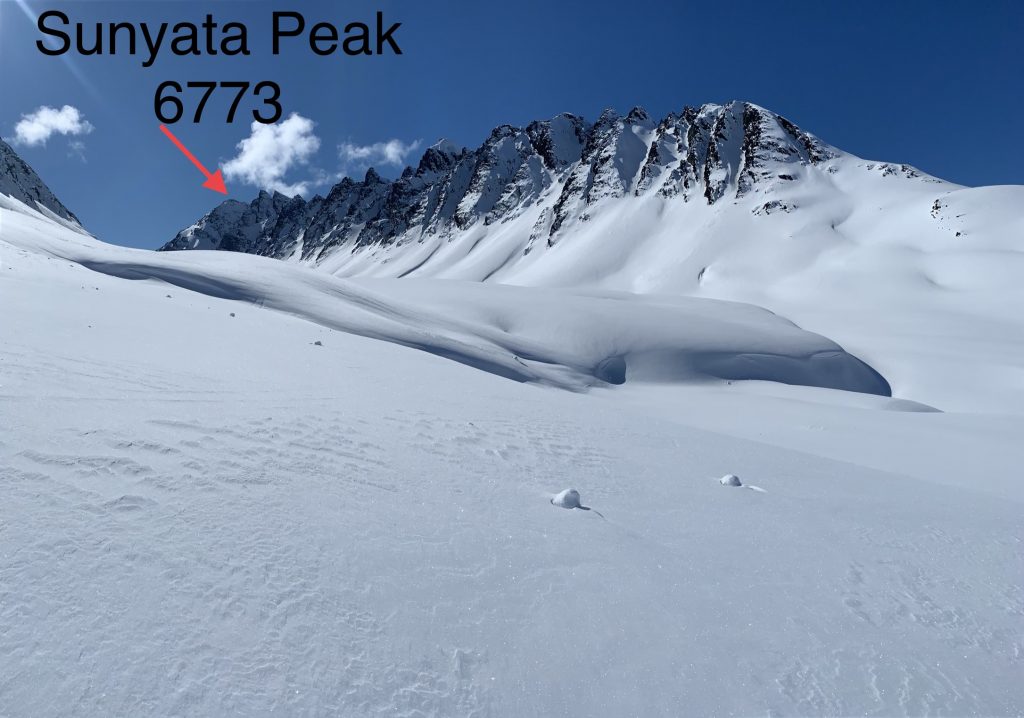
Midway up the Iguana backs valley: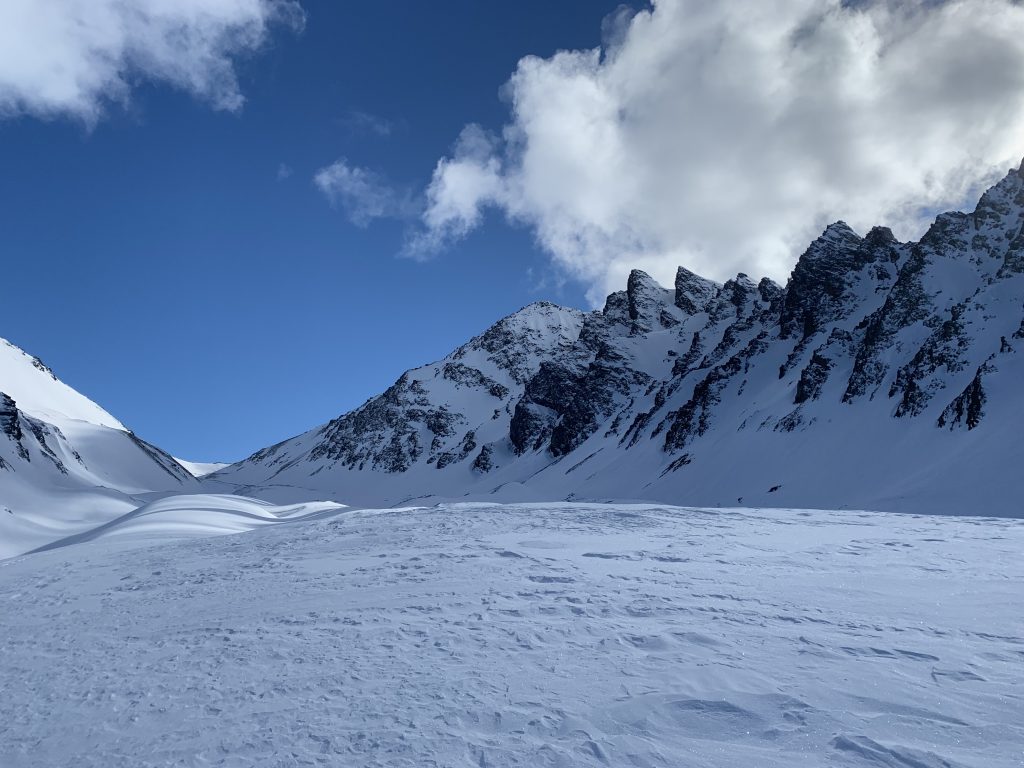
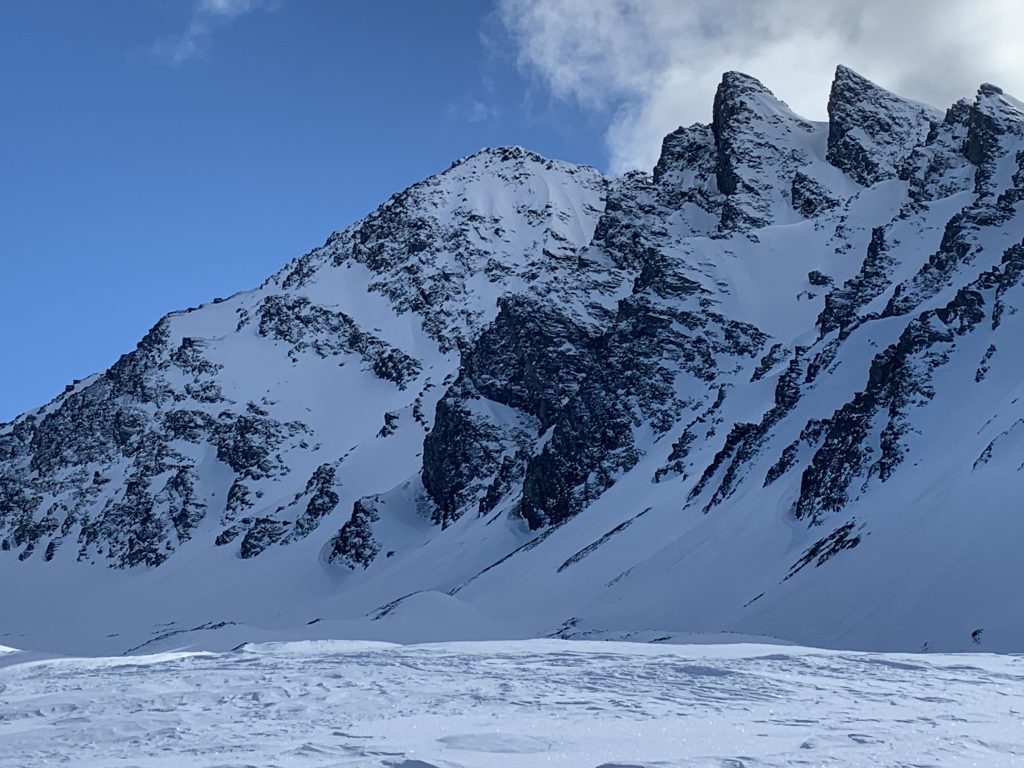
At the base of the couloir that accesses Sunyata’s upper north face: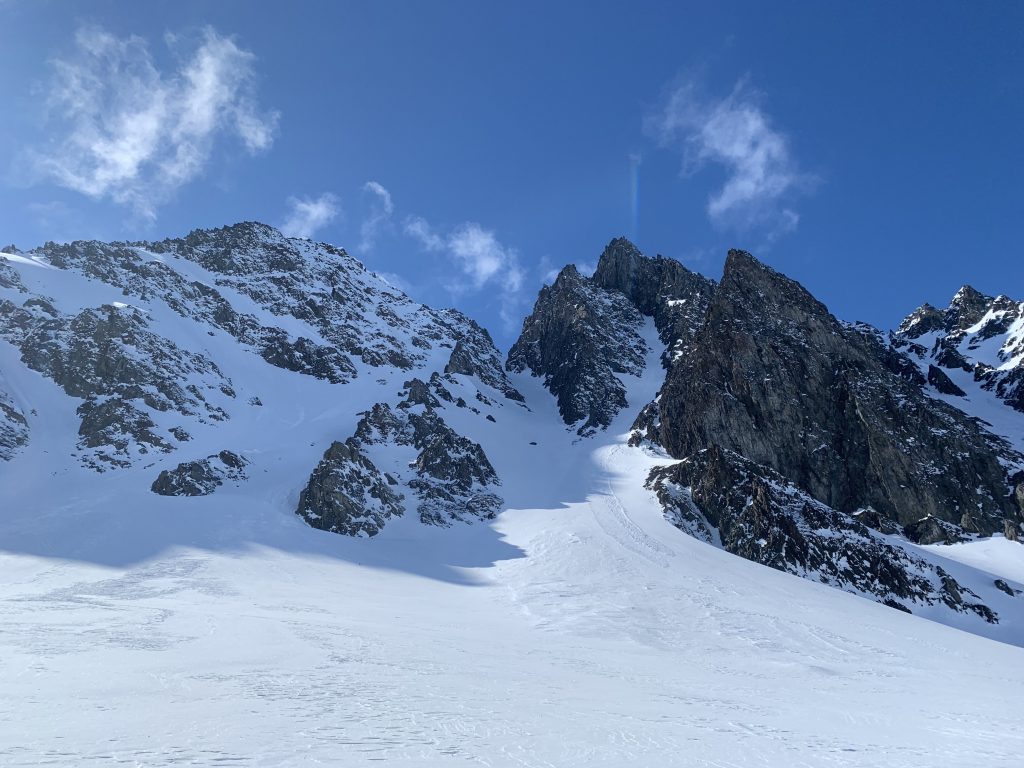
Having reconned a Sunyata ascent from a distance when I climbed and skied Total Crud and Purple Nurple weeks earlier, I originally had a different (simpler and more straightforward) idea for accessing the summit: climb the couloir and scramble the north ridge. However, the north ridge turned out to be fifth class (and I was solo and without climbing gear besides tool and pons).
Looking west toward Mt. Diamond from the couloir top out (lower part of the fifth class ridge visible on left):
Looking east toward Purple Nurple from the couloir top out:
Skirting around the backside (westerly aspects), seemed like a hassle and the snow was cooking in the sun. That said, I opted to poke around on the north face (accessed just below the couloir top out on the ridge through a narrow and steep choke) to see if I could find a reasonable (to a Randoist) line up. I did; although it took a couple tries, some perseverance, and was quite puckering (even to a Randoist).
Linking up very steep and exposed fluted spines led me to the ridge just below the summit. I had to crawl into a snow lip below a large exposed rock to take the edge off for a few minutes, but I couldn’t stand up due to overhanging rock. At first I tried going climber’s right from under this rocky perch, but got shutdown due to rotten snow over rock that was just too exposed. I crawled back into the perch, and attempted to go left. This went relatively cleanly, although wickedly exposed and steep. This put me on the ridge a short distance north from the summit. It was easy class 2-3 to the small summit pinnacle from there.
View toward Mt. Diamond from summit: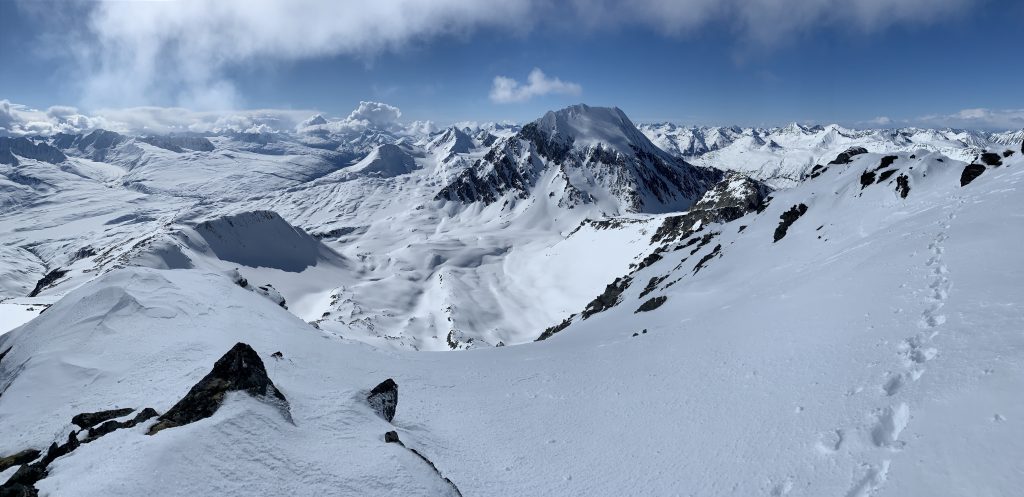
View toward Marshall Pass from summit: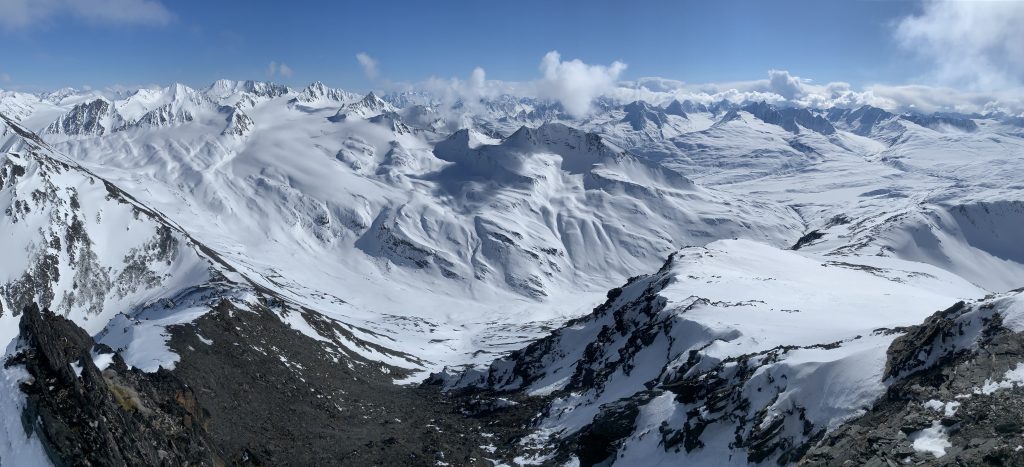
View up the Iguana Backs and Tiekel (in the distance with the road) valleys from summit: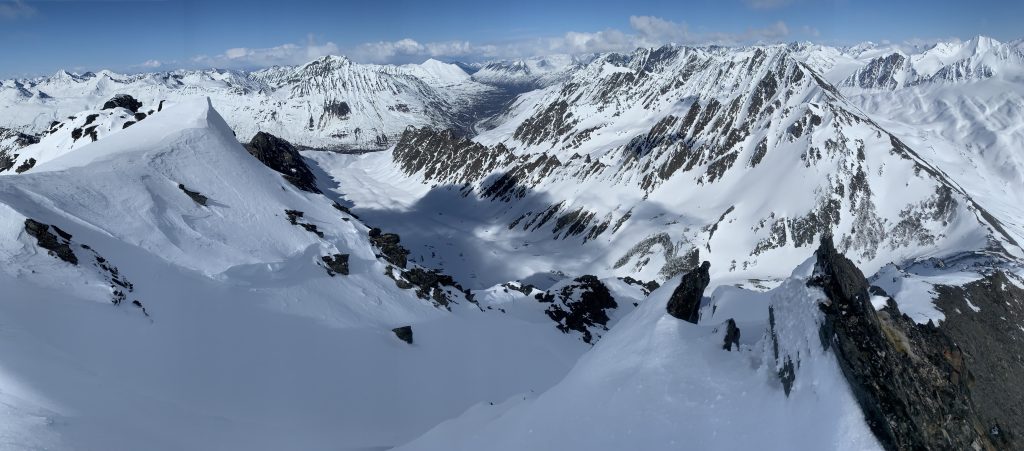
View toward Purple Nurple (just left of center) and the Cleave Glacier from the summit:
Looking back at the summit while hiking back to the drop-in: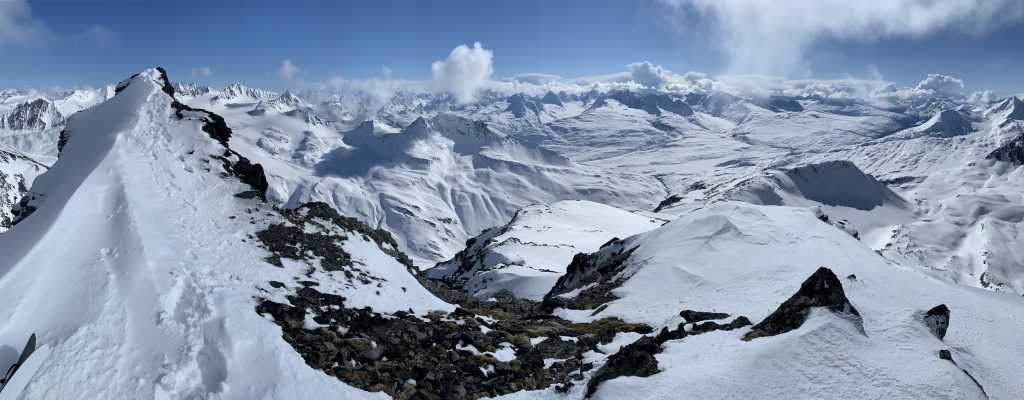
Looking down the line:
Approaching the choke from midway down the upper face:
A day or two after I climbed and skied Sunyata, my friends Taylor and Zack (Tok Air Service) flew by and took this photo on their way to Beaver Basin for a scouting mission of University Peak in the St. Elias Mountains (look closely to see the ski tracks):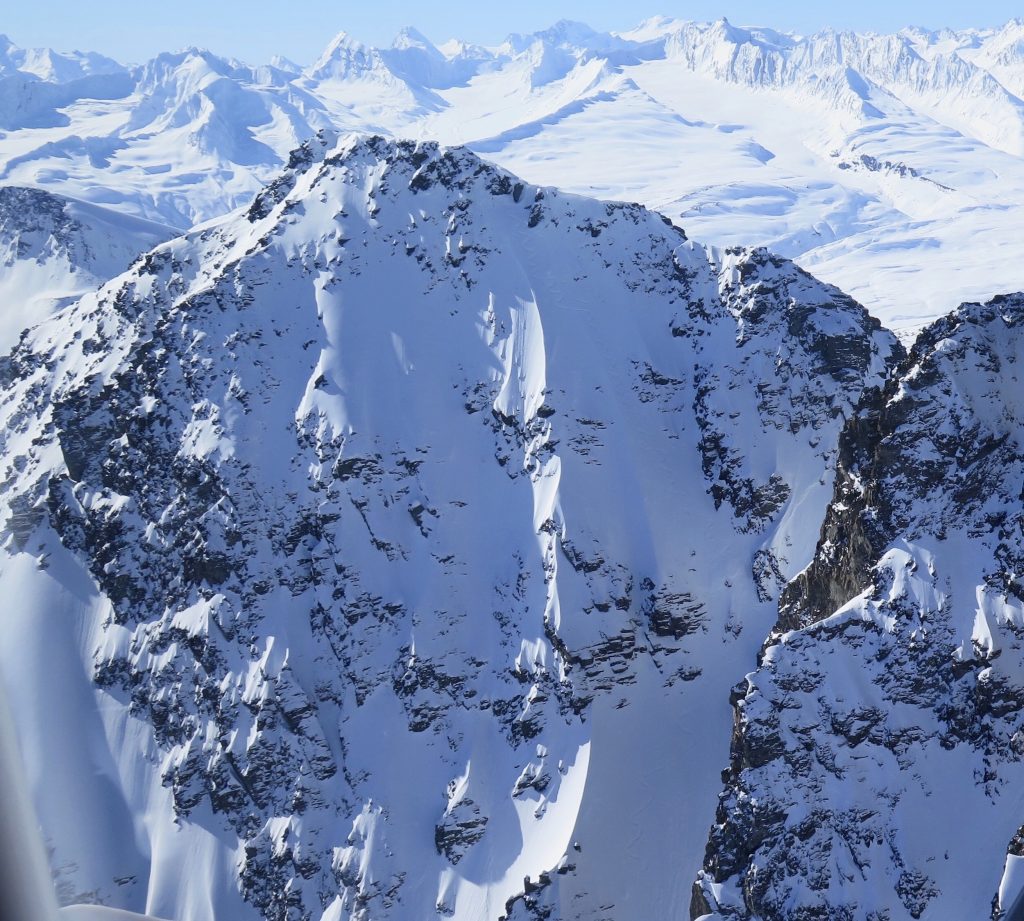
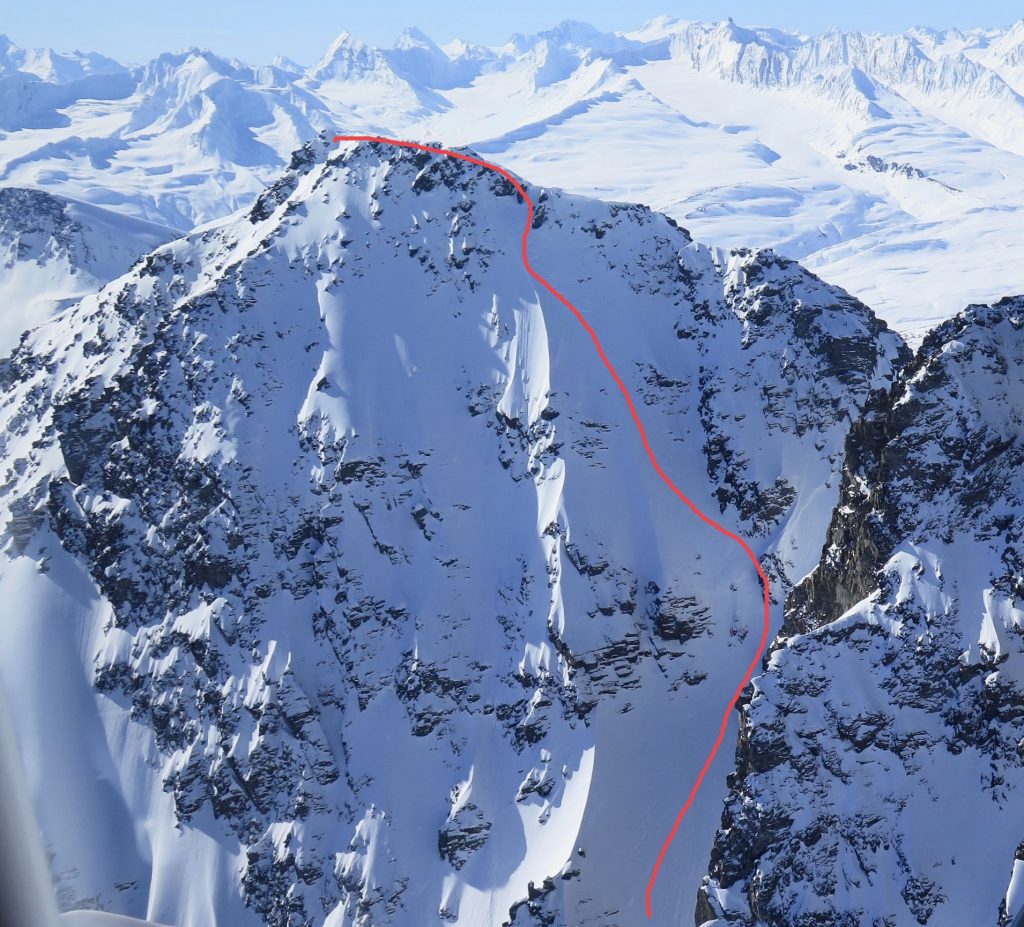
Short video with epic views:

